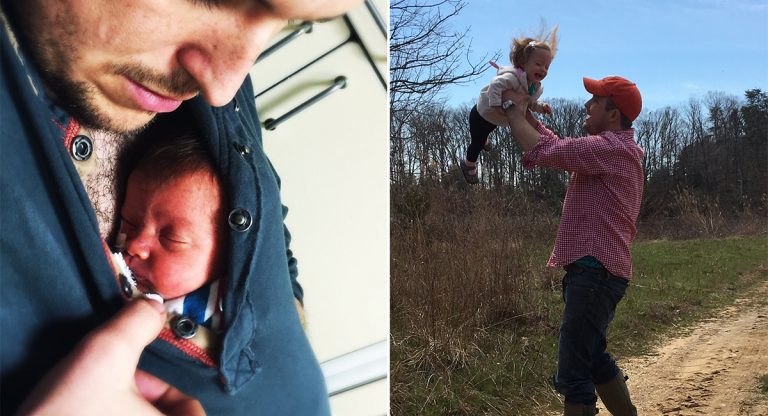I stepped into the neonatal intensive care unit, a fresh slathering of hand sanitizer drying quickly in my hands. Nurses buzzed to and fro as the faint, shrill cries of undersized newborns pierced the sterile surroundings. Wires, plastic boxes, and ding-donging instruments warned passing caregivers of unknown crises.
This was the second time I saw my daughter, Eliane “Annie” Grace, born six weeks premature following a snail-slow, yet meteorically fast two days at the hospital for my wife and myself. My wife, Lydia, was diagnosed with preeclampsia, which caused a spike in her blood pressure that was dangerous to her and our unborn baby. The doctor told us she was very concerned about Lydia’s blood pressure but that with the right care she and our little one would be okay: “At six weeks early, the baby is just like an underbaked cookie: still delicious, just needing more time in the oven.”
I had seen little Annie once before, some two hours after her birth. But this time, the flood of emotions were no less powerful (nor, frankly, have they waned since). This 4 pound, 10 ounce marvel was the most beautiful thing I’d ever seen. The NICU nurses had given her a Santa hat, which sat snugly on her head (it was Christmas time after all), her eyes were just open, and tiny hiccups squeaked from her even tinier mouth. She was indeed an underbaked cookie – small, wrinkled, inviting, delicious. My first and enduring thought was how ungrateful I had been to my own parents. Why had I not recognized how powerful their love was for me and what a magnificent burden keeping me alive was on them? My second thought was my wife and the task at hand.
Lydia repeatedly noted in the months before Annie’s arrival how important skin-to-skin contact and kangaroo mother care were during the first hours and days of a child’s life, even more so for premature babies. The reasons range from scientific to the seemingly magical. As she prepared for her emergency cesarean section, Lydia seemed most despondent at the prospect that – at the hospital’s insistence – she wouldn’t get to do this most important of bonding acts with our little one. She urged me to take her place. It was second best of course, but KMC with the dad also creates critical early bonds. With my wife attached to cacophonous post-operation machines and a drip of magnesium sulphate to treat the preeclampsia, I was in no place to say no. I was on a mission.
Picking my daughter up, her under five-pound body seeming to weigh less than a feather, I negotiated the numerous wires attached to her creased and rumpled frame. She had white flecks of afterbirth drying on her skin, a connection to her faraway mom. I slipped her under my shirt until just her tiny head poked out. One eye was closed, the other looked at me. She likely wasn’t thinking of anything, or maybe she was stunned by this hairy giant cooing at her, grinning like a mad man but also petrified of breaking her.
She gently wriggled, her warm skin pressed to mine. She yawned a few times. I was in total heaven. She was me in another form. She was so fragile yet so strong. “Six weeks early? No problem!” she seemed to project. I have no idea how long she lay on my chest, but we connected. I looked at the top of her dark head of hair, examined her nose, her tiny fingernails. What did she take in? I have no idea, but she was calm and seemed to flow in and out of consciousness.
I did this several more times through the day until, after 24 hours, the doctors allowed me to roll Lydia into the NICU. I was an old pro at KMC by this point, but this was mama and baby time. I watched and I cried as my wife took Annie into her arms for the first time and did her own KMC. Together, we are our own new mob of Kangaroos.
 Blog by David Wisner, father of a premature baby.
Blog by David Wisner, father of a premature baby.
